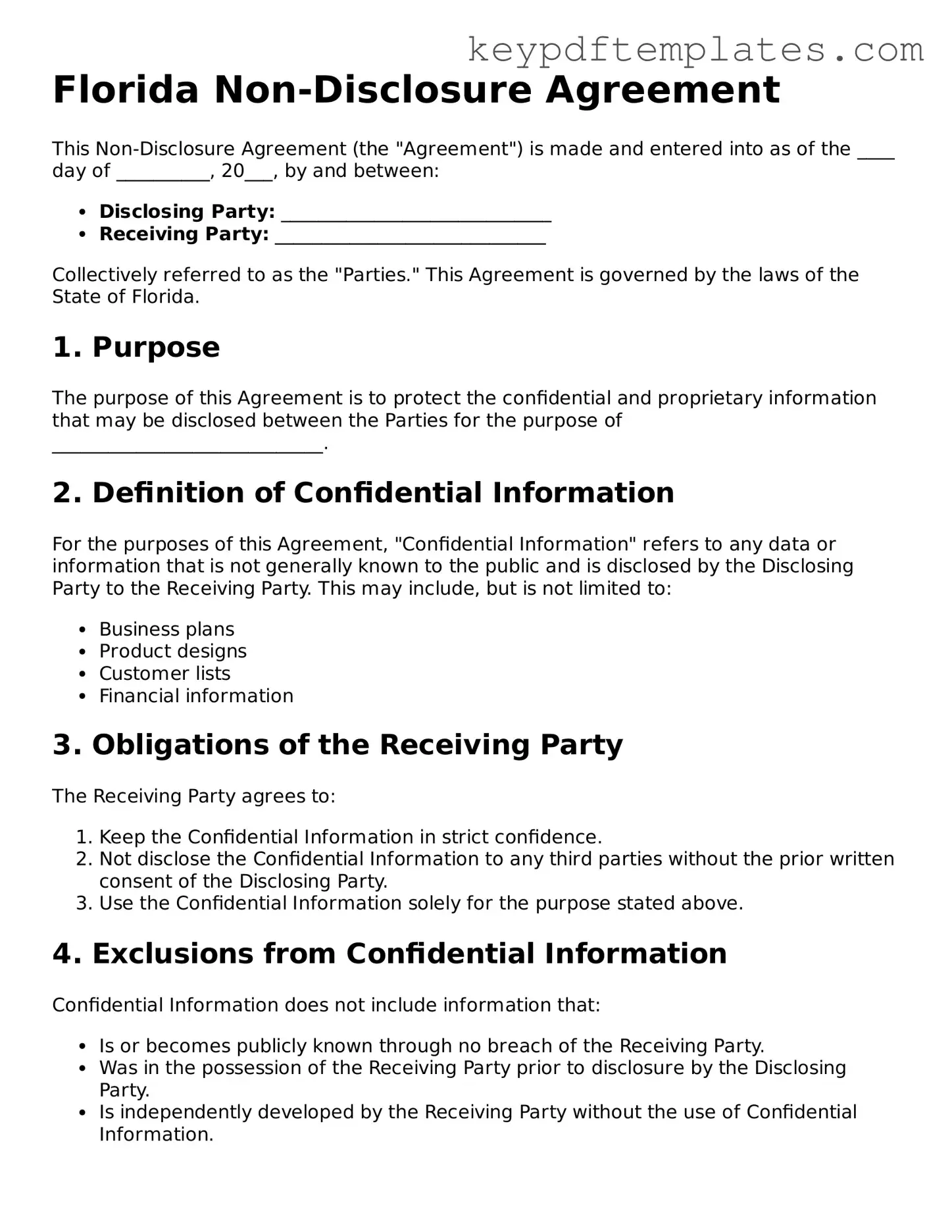Legal Non-disclosure Agreement Document for the State of Florida
A Florida Non-disclosure Agreement (NDA) is a legal document that protects confidential information shared between parties. This agreement ensures that sensitive data remains private and is not disclosed to unauthorized individuals. By using this form, businesses and individuals can safeguard their proprietary information and maintain a competitive edge.
Modify Document Online
